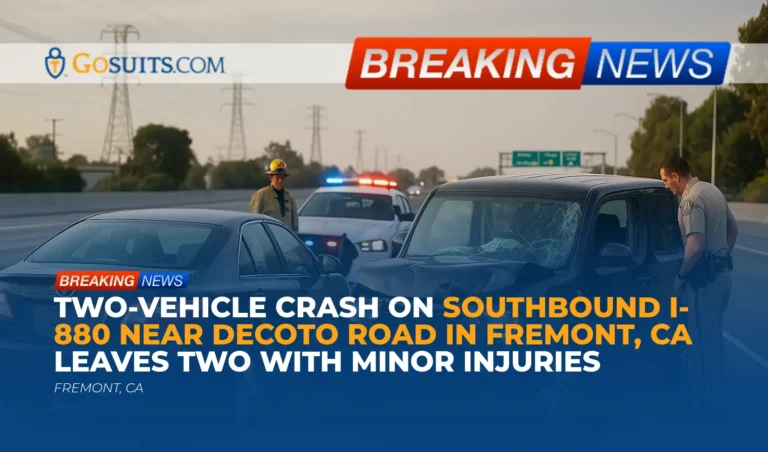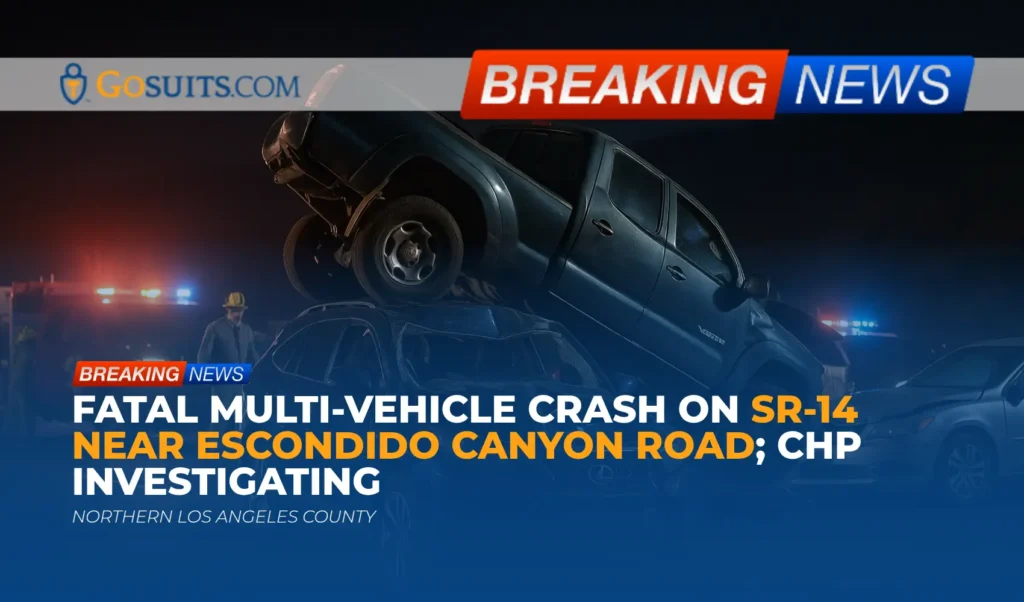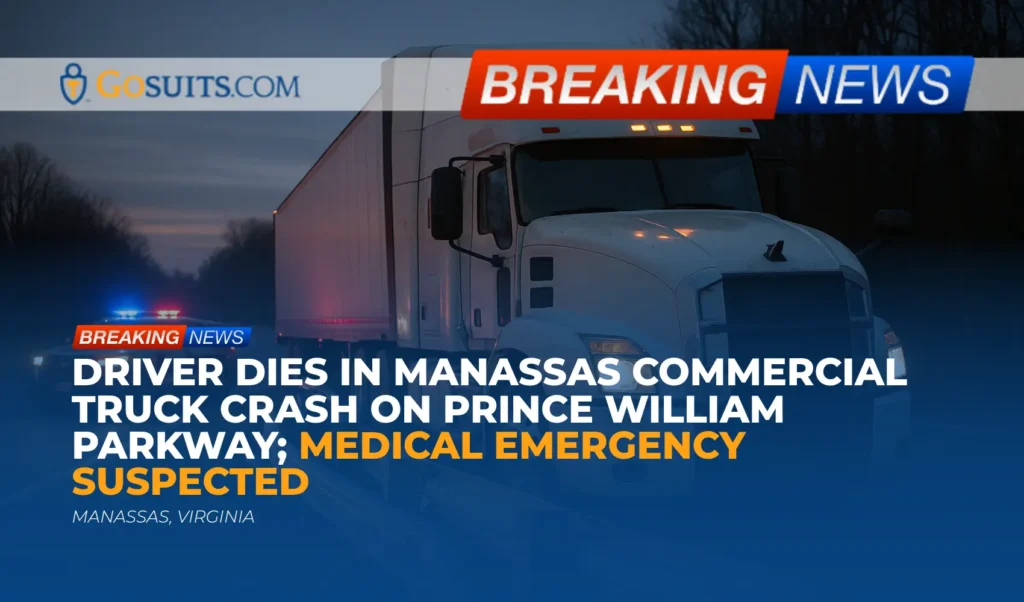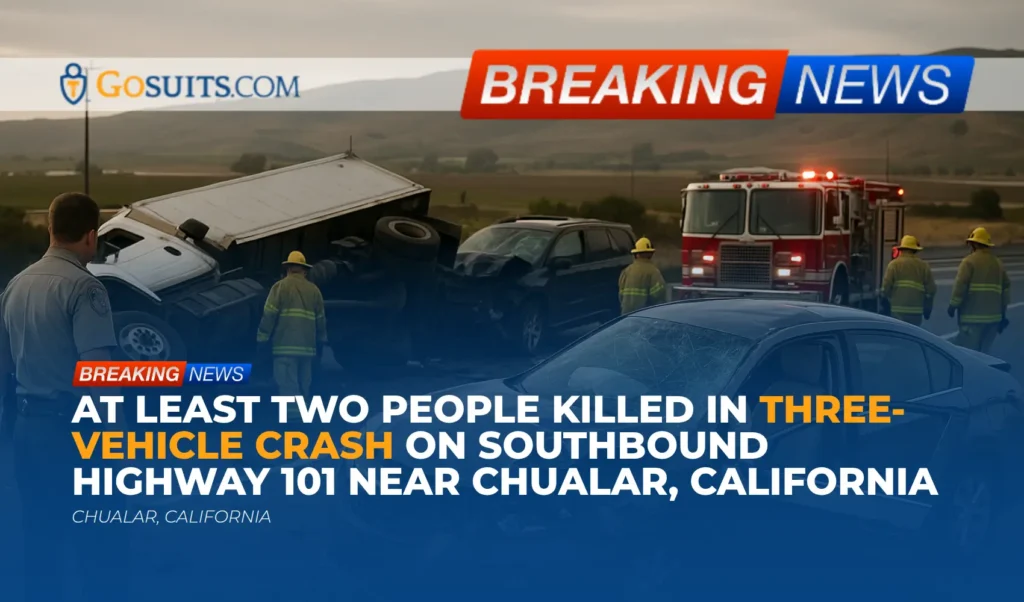- What happened on southbound I-880 near Decoto Road in Fremont
- What we know about those involved and the investigation
- Why even minor injuries matter after a freeway crash
- Official sources and where to obtain records
- Legal and safety considerations commonly evaluated in two-vehicle freeway collisions
- California reporting and insurance basics after an injury crash
- Steps to consider in the first days and weeks
- How liability and potential compensation are typically assessed
- Time limits to keep in mind in California
- Resources for drivers in and around Fremont and Alameda County
- Commentary from Gosuits Fremont, California Personal Injury Attorney
- Why prompt action matters after a freeway crash
What happened on southbound I-880 near Decoto Road in Fremont
Early Sunday morning on October 12, 2025, two vehicles collided on southbound Interstate 880 near the Decoto Road area in Fremont. Reports indicate the crash occurred around 6:02 a.m. and involved a black Toyota Camry and a black Nissan Cube. According to information attributed to the California Highway Patrol, two people sustained minor injuries, and one driver reported discomfort. Emergency responders arrived to provide medical attention, and towing services were used to remove the vehicles, which had moderate damage. The roadway was cleared after the initial response, and authorities continue to investigate the circumstances of the collision.
At this stage, publicly available details are limited. That is not unusual in the early hours after a freeway crash, as agencies prioritize care for those involved and the safe reopening of the roadway, then later finalize incident reports.
What we know about those involved and the investigation
Two people reportedly suffered minor injuries. Specific identities and ages were not released in the source materials. One driver reported minor discomfort, which aligns with what many people experience following a crash, especially in the neck, back, or shoulders.
The California Highway Patrol typically manages incidents on state freeways such as I-880. CHP usually documents the scene, interviews involved drivers and witnesses when possible, and prepares a collision report. For collisions with injuries, it is common for medical personnel to assess those involved, even when injuries seem minor.
It can take days or longer for an official collision report to become available for request. In some cases, additional facts are developed through follow-up interviews, vehicle inspections, retrieval of any available dash camera or traffic camera footage, and review of roadway conditions.
Why even minor injuries matter after a freeway crash
Many people feel shaken but otherwise “okay” immediately after a crash, only to notice increased pain, stiffness, headaches, or other symptoms hours or days later. This can happen with soft-tissue injuries and in some cases with head or neck injuries. The Centers for Disease Control and Prevention notes that some traumatic brain injury symptoms may emerge later rather than immediately, which is why medical evaluation and monitoring are important even when a person initially feels only discomfort. See the CDC’s information on traumatic brain injury at cdc.gov.
Seeking timely medical care does two important things. First, it protects health by identifying injuries early and guiding appropriate treatment. Second, it creates a medical record of symptoms and findings tied to the crash date, which can be important for insurance claims.
Official sources and where to obtain records
California Highway Patrol collision report
CHP is the lead agency for most freeway collisions. Individuals involved in a crash, their insurers, and in some cases legal representatives, may request a copy of the CHP collision report once it is ready. The CHP website provides information on requesting a collision report and locating local area offices. Visit chp.ca.gov and use the Services or Find an Office sections for guidance on requesting a Traffic Collision Report. Having the date, approximate time, location, and involved vehicle information makes the request process smoother.
DMV accident reporting (SR-1)
California law generally requires that a report be filed with the Department of Motor Vehicles within 10 days when a collision causes injury or death, or property damage above a statutory threshold. The obligation to report is set out in California Vehicle Code section 16000, which can be reviewed at the state’s legislative information site: leginfo.legislature.ca.gov. The DMV provides instructions and access to the SR-1 form on its website: dmv.ca.gov.
Filing the SR-1 is separate from contacting an auto insurer and separate from the police or CHP collision report. The DMV uses this report for financial responsibility purposes.
Traffic conditions and roadway information
Caltrans publishes real-time traffic and incident information on QuickMap, which is publicly accessible at quickmap.dot.ca.gov. While this is not a substitute for an official collision report, it can help confirm timing, closure points, or other roadway impacts associated with an incident.
Medical records
People who receive treatment after a crash can request copies of their own medical records. The U.S. Department of Health and Human Services explains individuals’ rights to access their health information under HIPAA at hhs.gov. Keeping copies of emergency department records, imaging, referrals, and bills is helpful for documenting injury-related care.
Autopsy or coroner reports in fatal crashes
This incident, as reported, involved minor injuries and no fatalities. In fatal collisions, autopsy or death investigation records are managed by the county coroner or medical examiner. Death certificates are handled by the California Department of Public Health; information about vital records is at cdph.ca.gov.
Legal and safety considerations commonly evaluated in two-vehicle freeway collisions
When evaluating a two-vehicle collision, several issues commonly emerge. Not every issue applies to every case, but investigators and insurers tend to consider the following.
- Right-of-way and lane discipline. On limited-access highways, maintaining lane position, signaling lane changes, and checking blind spots are fundamental. A sudden, unsafe lane change can create rear-end or side-swipe impacts.
- Following distance and speed. Tailgating reduces reaction time. Even at modest speeds, insufficient following distance can cause a crash if traffic ahead brakes suddenly.
- Driver attentiveness. Distraction, drowsiness, or inattention can lead to delayed reactions. Phone use is a frequent factor that investigators probe by asking about device activity or obtaining data in serious cases.
- Mechanical condition. Brake, tire, or lighting failures sometimes contribute. Documentation of vehicle maintenance and post-crash inspections can be relevant.
- Roadway environment. Temporary construction, debris, or poor surface conditions may play a role. If a roadway defect is alleged, claims procedures differ when a public entity is involved.
- Evidence sources. CHP reports, photographs, damage patterns, event data recorder (EDR) information, and any available dash or traffic camera footage often help clarify what happened.
California applies comparative fault principles when more than one party’s actions contribute to a crash. The Judicial Council’s Civil Jury Instructions address comparative fault concepts that can reduce recovery in proportion to a person’s share of responsibility; see the CACI resources at courts.ca.gov.
If a claim involves a public entity, such as an allegation about a dangerous condition of public property, special rules and shorter deadlines may apply. In general, a written claim against a public entity for personal injury must be presented within six months, under Government Code section 911.2, available at leginfo.legislature.ca.gov.

California reporting and insurance basics after an injury crash
California is a fault-based auto insurance state, meaning the driver who is considered legally at fault is generally responsible for the harms they cause, typically paid through their liability insurance. The DMV describes financial responsibility laws and insurance requirements for drivers on its site at dmv.ca.gov.
Three distinct processes often happen after a crash, and it helps to keep them straight:
- Traffic collision report. Prepared by CHP or police, this report records observations, statements, and sometimes diagrams. It is often used by insurers to assess liability but is not the final word on fault.
- DMV reporting. The SR-1 is a separate report required by statute when injury occurs or when damages exceed a statutory threshold. See California Vehicle Code section 16000 on leginfo.legislature.ca.gov.
- Insurance claims. Claims can be opened with one’s own carrier and with the other driver’s carrier. Coverage that may apply includes bodily injury liability, property damage liability, medical payments coverage, and uninsured or underinsured motorist coverage. Policy terms control, and different deadlines apply.
Recorded statements given to an insurance company can be used to evaluate or challenge a claim. It is wise to understand one’s rights before speaking at length with any insurer. Consider consulting an attorney first, and ask questions during a free consultation to avoid missteps.
Steps to consider in the first days and weeks
The period right after a crash can feel overwhelming. The following practical steps are commonly helpful for protecting health and preserving information that may be needed later.
- Seek medical evaluation. Even when symptoms are mild, prompt evaluation documents injuries and provides treatment guidance. Follow through on referrals and keep discharge papers, imaging reports, and prescriptions. For general information about access to medical records, see HHS’s HIPAA guidance at hhs.gov.
- Preserve evidence. Keep photos of the vehicles, the scene, and any visible injuries. Save dash cam footage. Do not discard damaged parts before documenting them.
- Identify witnesses. Write down names and contact information for any witnesses. Store this separately from your phone in case a device is lost or replaced.
- Track symptoms and missed time. A simple journal of pain levels, sleep disruptions, and missed activities or work helps show the real-world impact of injuries.
- Avoid social media about the crash. Posts, photos, or comments can be misconstrued by insurers. It is usually best to refrain from sharing details publicly.
- Report to DMV when required. If there is injury or qualifying property damage, file the SR-1 within 10 days as required by California Vehicle Code section 16000, which is posted at leginfo.legislature.ca.gov.
- Consult an attorney before calling insurers. A free consultation can clarify coverage, fault issues, and how to handle recorded statements. Statements made to any insurer may be used later in the claims process.
- Use official channels for records. For the CHP collision report, begin at chp.ca.gov. For roadway information near the time of the incident, Caltrans QuickMap is at quickmap.dot.ca.gov.
How liability and potential compensation are typically assessed
In most California auto claims, the central question is whether a driver failed to use reasonable care and whether that failure caused harm. Evidence used to evaluate fault can include the CHP narrative and diagram, physical evidence like crush profiles and paint transfer, EDR data when available, medical records tying injuries to the event, and consistent witness statements.
California uses comparative fault. If both drivers share responsibility, each person’s recovery can be reduced by their percentage of fault, as reflected in the Judicial Council’s civil jury instructions available through courts.ca.gov.
When an injured person seeks compensation through an insurance claim, typical categories claimed may include medical expenses, lost wages or income, costs of rehabilitation, and in appropriate cases, non-economic harms such as pain, inconvenience, and loss of enjoyment of life. These categories depend on documentation and causation. There is no standard formula for valuation; each case is fact-specific.
If a vehicle was being driven for work, a business may be involved through principles of vicarious liability. If a dangerous roadway condition is alleged, a public entity may be implicated, which triggers special claim procedures and deadlines under the Government Claims Act. For those scenarios, see Government Code section 911.2 at leginfo.legislature.ca.gov.
Time limits to keep in mind in California
Deadlines significantly affect rights after an injury crash. While this incident involved minor injuries as reported, general timeframes in California include:
- Personal injury claims. Most negligence-based injury claims must be filed within two years of the date of injury. This is reflected in California Code of Civil Procedure section 335.1 at leginfo.legislature.ca.gov.
- Claims against public entities. Written claims must usually be presented within six months for personal injury or property damage. See Government Code section 911.2 at leginfo.legislature.ca.gov.
- DMV SR-1 reporting. When required, the report must be filed within 10 days under Vehicle Code section 16000 at leginfo.legislature.ca.gov.
There are exceptions and special rules for certain situations and for minors, so understanding the specific timeline that applies to a given incident is important.
Resources for drivers in and around Fremont and Alameda County
- California Highway Patrol. Learn how to request a collision report or locate the relevant area office at chp.ca.gov.
- California DMV. Information on reporting collisions, insurance requirements, and driver licensing is at dmv.ca.gov.
- Caltrans QuickMap. For real-time traffic conditions and incident impacts on I-880 and surrounding routes, visit quickmap.dot.ca.gov.
- California Department of Public Health. For information about vital records in fatal cases, see cdph.ca.gov.
- Judicial Council of California. General resources on civil jury instructions and court processes are at courts.ca.gov.
Commentary from Gosuits Fremont, California Personal Injury Attorney
Our thoughts are with everyone affected by the collision reported near Decoto Road on southbound I-880. Morning crashes can disrupt lives in an instant, and even minor injuries can create pain, worry, and unexpected expenses. This article is intended for education and general information, with respect for those involved.
From a personal injury attorney’s perspective, two-vehicle freeway crashes often hinge on careful fact development. Lane changes, following distance, and driver attention are common focal points. Early photographs, prompt medical evaluation, and the CHP collision report tend to provide the most helpful foundation for understanding what happened. When injuries are described as minor, it remains important to monitor symptoms, because stiffness, headaches, or radiating pain sometimes emerge after the adrenaline wears off.
Insurance companies and large corporate defendants rely on process and information asymmetry. Adjusters may quickly request recorded statements and prompt medical authorizations that are broader than necessary. These tools can be used to shape a narrative, minimize the severity of injuries, or attribute symptoms to preexisting conditions. Property damage appraisals may understate the forces involved or overlook hidden structural issues, which can later be used to argue that injuries must be minimal because vehicle damage “looks light.” Understanding what information must be provided and what can wait until after advice is obtained can help prevent avoidable setbacks.
A free consultation can offer clarity about coverage, fault, and timing without any obligation. It is a practical way to understand options, potential next steps, and how to avoid common pitfalls such as making broad statements to an insurer that may later be misinterpreted. Speaking with a seasoned and skilled professional early can help align medical care, documentation, and reporting requirements in a way that preserves choices going forward.
Why prompt action matters after a freeway crash
What to do
- Document health and care. Obtain prompt medical evaluation, follow recommendations, and keep all records, imaging, and receipts in one place.
- Secure official records. Note the CHP incident number if available, and request the collision report when it is ready through official channels. File any required DMV report on time.
- Preserve scene evidence. Save photographs, dash cam video, and repair estimates. Identify and keep contact information for witnesses.
- Learn rights before speaking with insurers. Consider a free consultation to understand coverage and obligations before giving recorded statements.

Why it matters and when to act
- Medical recovery. Early care can prevent worsening injuries and creates contemporaneous records that link symptoms to the crash date. Delays can create gaps that insurers later highlight.
- Evidence fades. Skid marks fade, debris is cleared, and vehicles are repaired or salvaged. Preserving evidence early strengthens any later claim process.
- Deadlines are strict. The DMV SR-1 has a 10-day timeline when required, public entity claims often have a six-month presentation deadline, and most personal injury claims have a two-year limitation period. Missing a deadline can limit options. See the statutes at Vehicle Code § 16000, Government Code § 911.2, and Code of Civil Procedure § 335.1.
- Insurance positioning. Early statements can shape claim outcomes. Understanding policy benefits and obligations before speaking with carriers helps avoid inadvertently limiting a claim.
Important note on sources and accuracy
Details summarized here reflect information attributed to the California Highway Patrol and secondary reporting about the October 12, 2025 collision near Decoto Road in Fremont. Official information about reporting requirements and timelines is linked to government resources, including California Highway Patrol, California DMV, Caltrans QuickMap, the CDC, and California statutes hosted at leginfo.legislature.ca.gov. This article is respectful of those affected and intended to be informative and educational.






